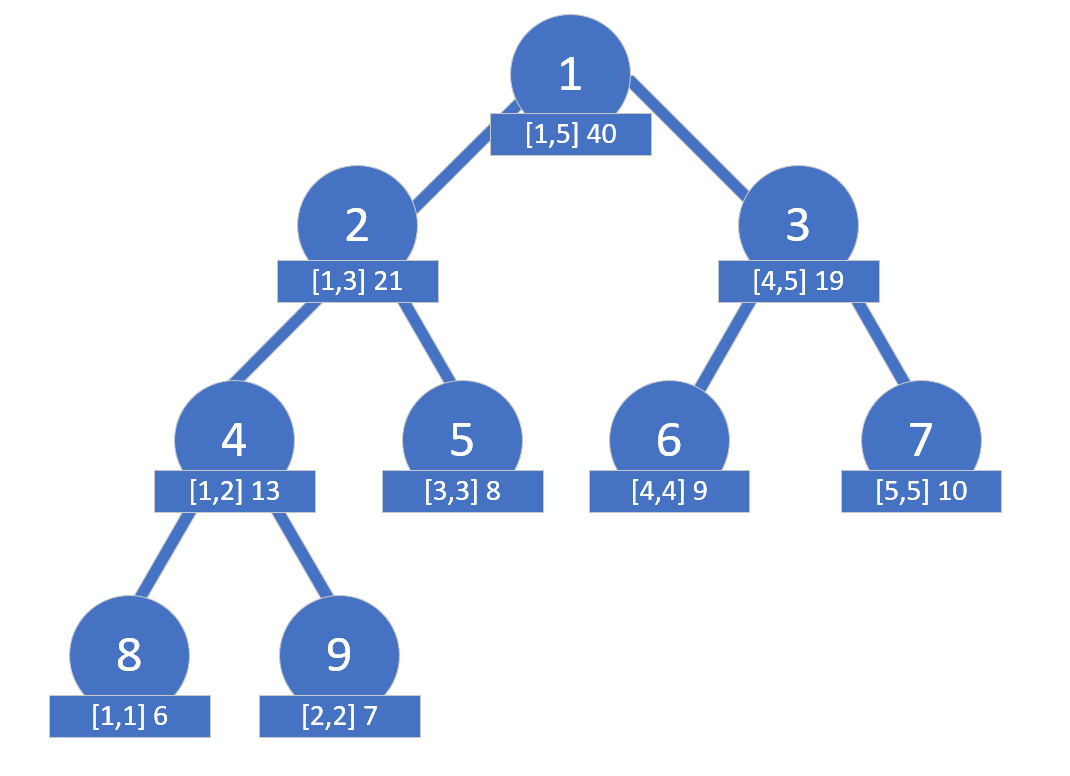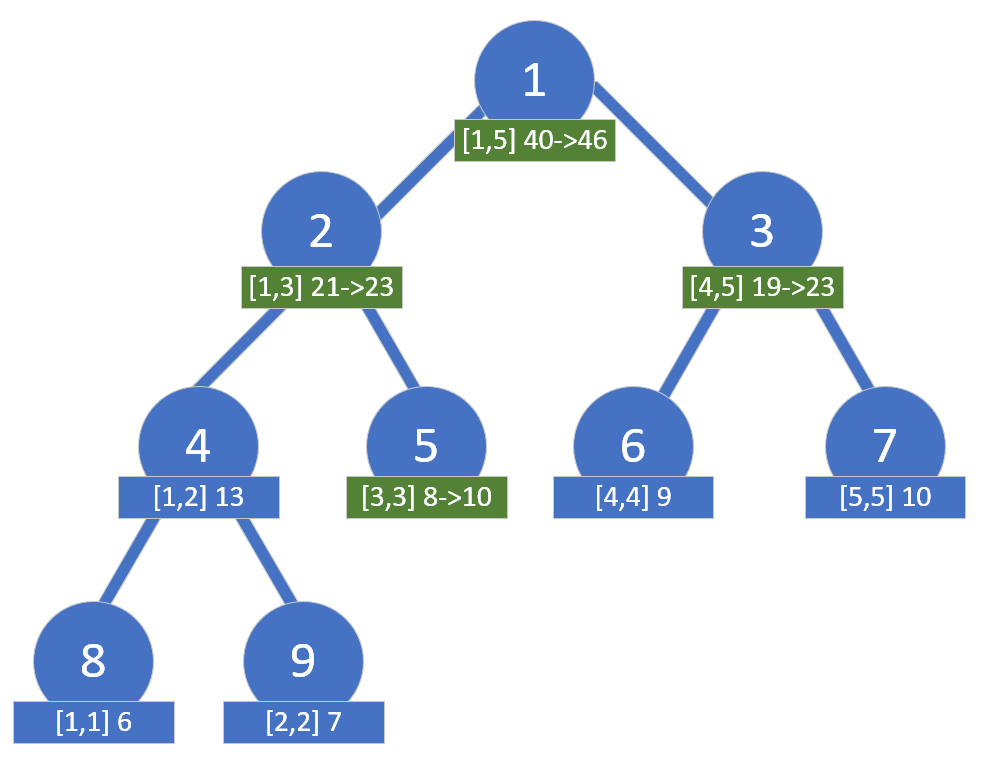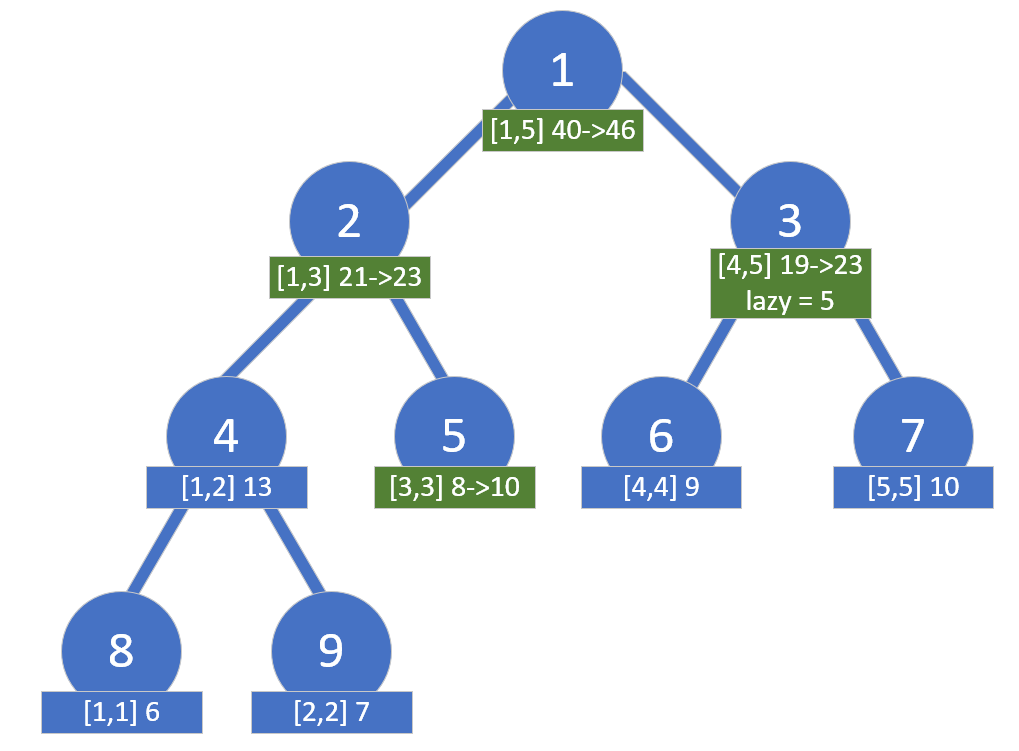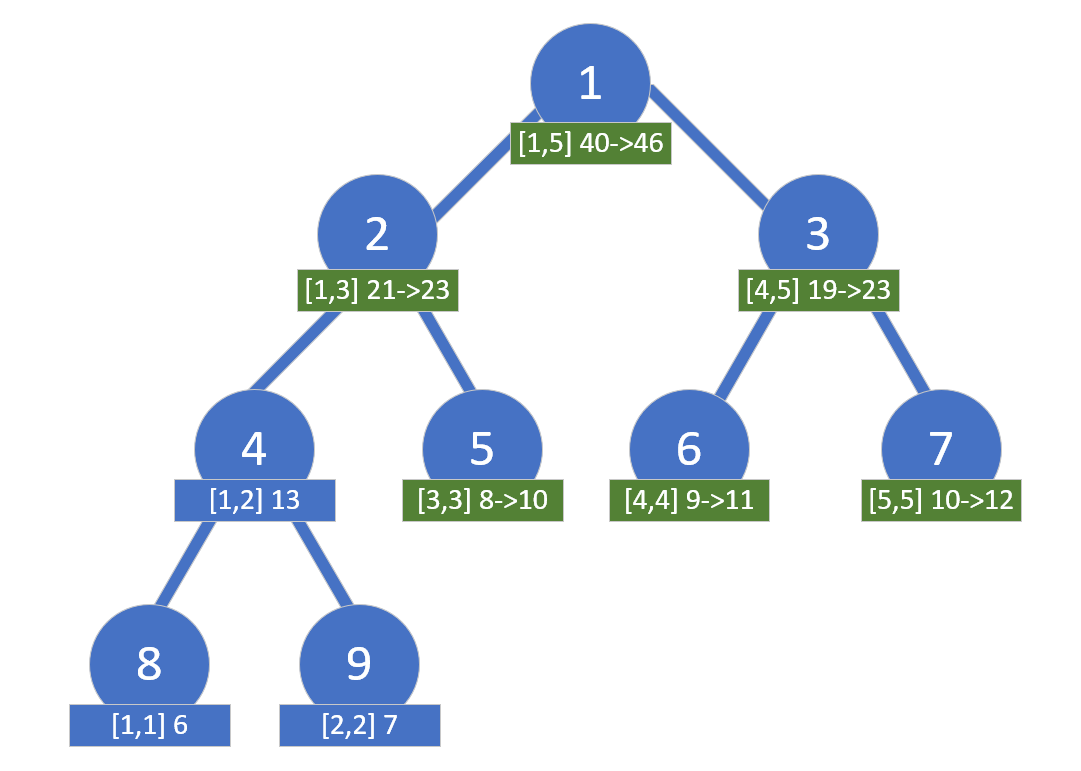Two Pointer Problems (Part 2) - Sliding Window
Two pointers are used to scan in two directions during traversal, achieving the desired algorithmic goals.
A segment tree is a data structure commonly used for maintaining interval information.
Segment trees can perform operations like single-point modification, interval modification, and interval queries (such as interval sum, maximum value, minimum value) in
A segment tree divides each interval of non-unit length into left and right sub-intervals recursively. It forms a tree structure where the entire segment is divided. The information of the interval is obtained by merging the information of the left and right sub-intervals. This data structure facilitates most interval operations.
Suppose we have an array
The structure of this segment tree is as follows:

Here’s the corresponding code:
vector<int> node; // Segment tree indexing starts from 1
vector<int> nums; // Auxiliary for building the tree
int N;
For a node
void build(int i, int l, int r) { // i represents the current node, l represents the left boundary, r represents the right boundary
if (l == r) {
node[i] = nums[l];
return;
}
int mid = (l + r) / 2;
build(2 * i, l, mid);
build(2 * i + 1, mid + 1, r);
node[i] = node[2 * i] + node[2 * i + 1];
}
If the query interval is
int query(int i, int l, int r, int s, int t) { // i represents the current node, [l,r] is the query interval, [s,t] represents the interval covered by the current node
if (l <= s && r >= t) // If [s,t] is a sub-interval of [l,r], directly return
return node[i];
int sum = 0, mid = (s + t) / 2; // Recursively query sub-intervals with intersections
if (l <= mid) sum += query(2 * i, l, r, s, mid); // Recursively query left subtree
if (r >= mid + 1) sum += query(2 * i + 1, l, r, mid + 1, t); // Recursively query right subtree
return sum;
}
Similar to interval queries, if there’s a containment relationship, we can directly add the value to be updated. If there’s an intersection, we perform recursive updates. Here’s the code:
void update(int i, int l, int r, int s, int t, int add) {
if (l <= s && r >= t) { // If [s,t] is a sub-interval of [l,r], directly update
node[i] += (t - s + 1) * add;
return;
}
int mid = (s + t) / 2; // Recursively update sub-intervals with intersections
if (l <= mid) update(2 * i, l, r, s, mid, add); // Recursively update left subtree
if (r >= mid + 1) update(2 * i + 1, l, r, mid + 1, t, add); // Recursively update right subtree
node[i] = node[2 * i] + node[2 * i + 1];
}
When updating the interval

We notice that when recursively updating, the process stops at node
To handle this, we introduce lazy propagation. We mark the nodes where recursion ends with a flag. During the next query operation, we update the unprocessed child nodes. This flag is called a lazy tag. The effect of updating is as follows:

And the effect after querying is as follows:

We can use a vector<int> lazy to store the lazy tags. Here’s the lazy propagation code:
void push_down(int i, int l, int r) {
if (!lazy[i])
return;
int mid = (l + r) / 2;
lazy[2 * i] += lazy[i];
lazy[2 * i + 1] += lazy[i]; // Propagate lazy tag down
node[2 * i] += (mid - l + 1) * lazy[i];
node[2 * i + 1] += (r - mid) * lazy[i]; // Add the value of the lazy tag to the child nodes
lazy[i] = 0;
}
Then call push_down() in the query and update functions accordingly.
class SegmentTree {
public:
vector<int> node; // Segment tree indexing starts from 1
vector<int> lazy; // Lazy tags
vector<int> nums; // Auxiliary for building the tree
int N = 1;
SegmentTree(vector<int> nums, int n) : node(n + 1, 0), lazy(n + 1, 0), nums(nums) {}
void build(int i, int l, int r) { // i represents the current node
, l represents the left boundary, r represents the right boundary
N++;
if (l == r) {
node[i] = nums[l - 1];
return;
}
int mid = (l + r) / 2;
build(2 * i, l, mid);
build(2 * i + 1, mid + 1, r);
node[i] = node[2 * i] + node[2 * i + 1];
}
void push_down(int i, int l, int r) {
if (!lazy[i])
return;
int mid = (l + r) / 2;
lazy[2 * i] += lazy[i];
lazy[2 * i + 1] += lazy[i]; // Propagate lazy tag down
node[2 * i] += (mid - l + 1) * lazy[i];
node[2 * i + 1] += (r - mid) * lazy[i]; // Add the value of the lazy tag to the child nodes
lazy[i] = 0;
}
int query(int i, int l, int r, int s, int t) { // i represents the current node, [l,r] is the query interval, [s,t] represents the interval covered by the current node
if (l <= s && r >= t) // If [s,t] is a sub-interval of [l,r], directly return
return node[i];
push_down(i, s, t);
int sum = 0, mid = (s + t) / 2; // Recursively query sub-intervals with intersections
if (l <= mid) sum += query(2 * i, l, r, s, mid); // Recursively query left subtree
if (r >= mid + 1) sum += query(2 * i + 1, l, r, mid + 1, t); // Recursively query right subtree
return sum;
}
void update(int i, int l, int r, int s, int t, int add) {
if (l <= s && r >= t) { // If [s,t] is a sub-interval of [l,r], directly update
lazy[i] += add;
node[i] += (t - s + 1) * add;
return;
}
push_down(i, s, t);
int mid = (s + t) / 2; // Recursively update sub-intervals with intersections
if (l <= mid) update(2 * i, l, r, s, mid, add); // Recursively update left subtree
if (r >= mid + 1) update(2 * i + 1, l, r, mid + 1, t, add); // Recursively update right subtree
node[i] = node[2 * i] + node[2 * i + 1];
}
};
